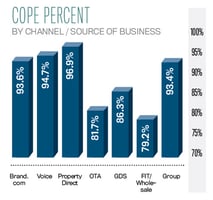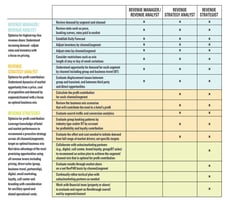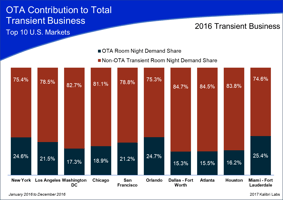On a superficial level, the implications of the rising costs of customer acquisition are easily...
Published Articles
Hotel Asset Valuation in the Digital Age
By Cindy Estis Green and Vince Cusma
The hotel industry has gained expertise at managing labor and other operational costs over the years. Thanks to the digital marketplace, there are now acquisition costs to manage, and doing it well can lead to higher asset values.
Is RevPAR Index Telling the Full Story?
The hotel industry traditionally looks at the traditional RevPAR index (Hotel-Collected RevPAR Index) as the overall health gauge and measure of success. From asset managers, to brands, to operators, this index is no longer adequate to answer questions like, is the hotel operating as well as possible? or how does it compare to the market? Hotel-collected RevPAR Index provides only one element of the insight necessary for performance evaluation in the digital age.
With the increased usage of third-party booking sites, hotels can increase Hotel-Collected RevPAR while they unwittingly decrease the amount of revenue that flows through to profit. The concept of revenue capture
-
the percentage of guest-paid revenue retained by the hotel after customer acquisition costs are deducted
-
becomes much more relevant to asset managers in their quest to improve asset values. Declining revenue capture results in less money on the bottom line which equates to lower asset values.
Profit Margins Are Not Keeping Pace with Guest-paid Revenue
image-block-outer-wrapper
layout-caption-below
design-layout-inline
combination-animation-none
individual-animation-none
individual-text-animation-none
"
data-test="image-block-inline-outer-wrapper"
>
sqs-block-image-figure
intrinsic
"
style="max-width:500px;"
>
sqs-block-image-button
lightbox
"
data-description=""
data-lightbox-theme="dark"
>
View fullsize
class="image-block-wrapper"
data-animation-role="image"
>
>
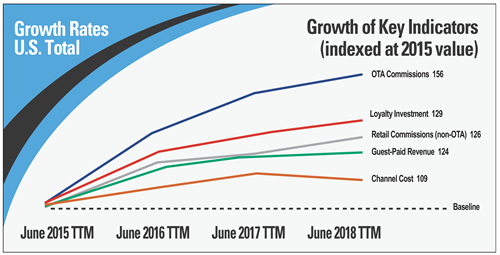
Acquisition costs have consistently climbed since 2015 – OTA commissions specifically have been running two to three times the growth rate of guest-paid revenue every year for the last three years.
Acquisition costs are currently at 15 percent to 25 percent of guest-paid revenue, a spending level that calls for systematic cost management. Looking at traditional RevPAR and RevPAR Index can only provide the top-line picture; having a finger on the pulse of the business means knowing what it costs the hotel to reach that RevPAR index.
Case Studies: How Much Impact Can Acquisition Costs Have on Asset Values?Let’s compare two similar hotels in terms of size and market profile each with $10 million in guest-paid room revenue as an example. Each hotel has revenue opportunities in the market by rate category, channel and week-part. If they can capture that revenue without adding additional booking costs or sales and marketing expense, they will increase their revenue capture rate and therefore their asset value.
image-block-outer-wrapper
layout-caption-below
design-layout-inline
combination-animation-none
individual-animation-none
individual-text-animation-none
"
data-test="image-block-inline-outer-wrapper"
>
sqs-block-image-figure
intrinsic
"
style="max-width:800px;"
>
sqs-block-image-button
lightbox
"
data-description=""
data-lightbox-theme="dark"
>
View fullsize
class="image-block-wrapper"
data-animation-role="image"
>
>
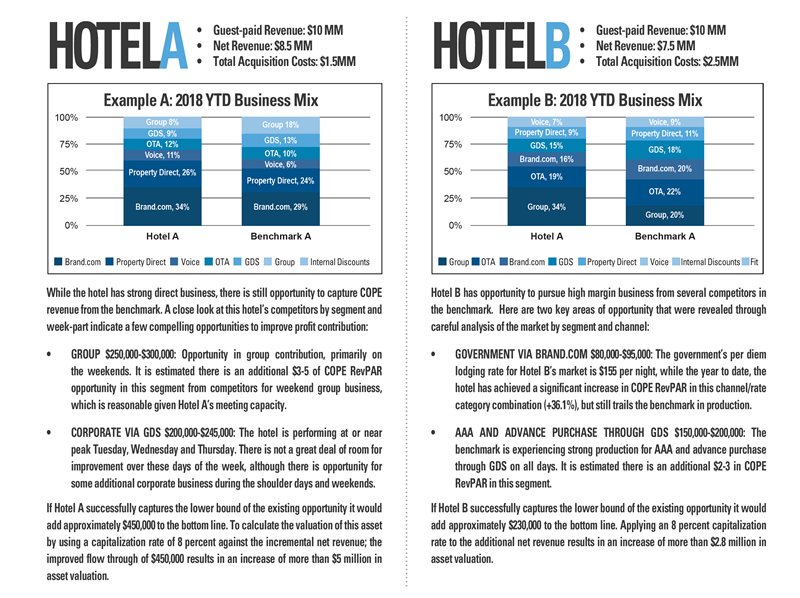
Revenue Strategy Can Drive Dramatic Improvement in Asset Value
Hotels need to keep a close watch on RevPAR and RevPAR index, but by considering its impact on profit contribution, they can drive improved asset values. Guest-paid, COPE and net RevPAR are now the metrics of the digital age. In the above examples, both Hotel A and B have opportunities to improve. If we apply an 8 percent cap rate, Hotel A could increase asset value by $5 million through capturing business in the market while maintaining the same sales and marketing expense; Hotel B could increase asset value by $2.8 million by capturing business in the market.
When hotels evaluate the business available in the market by segment and week-part and target the best opportunities based on profit contribution using COPE and net RevPAR market share, they can execute a revenue strategy to deliver more to the bottom line. Understanding the trade-offs of different mixes of business and setting proactive strategies to target the hotel’s optimal business mix will result in a higher revenue capture and healthier asset values.


